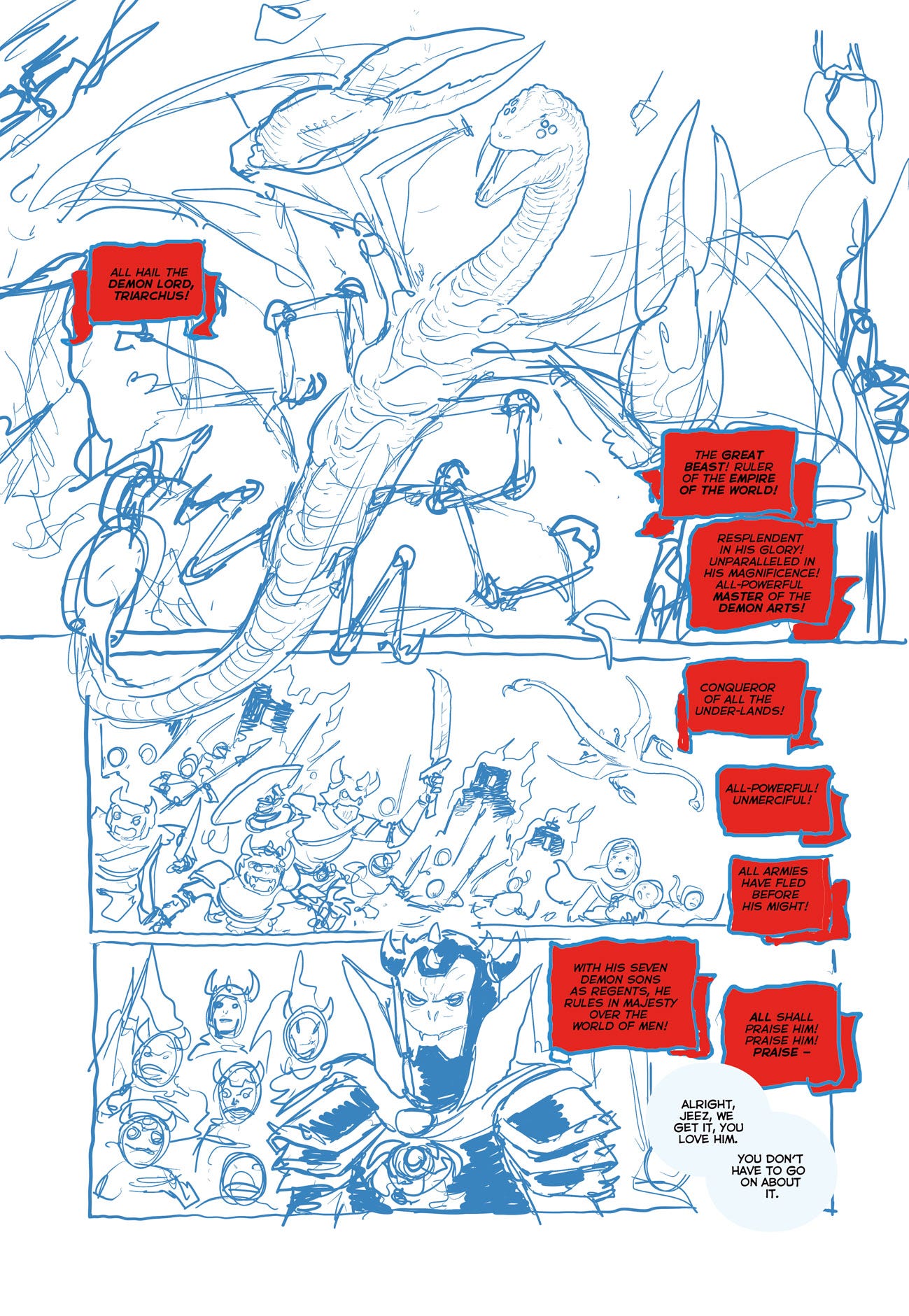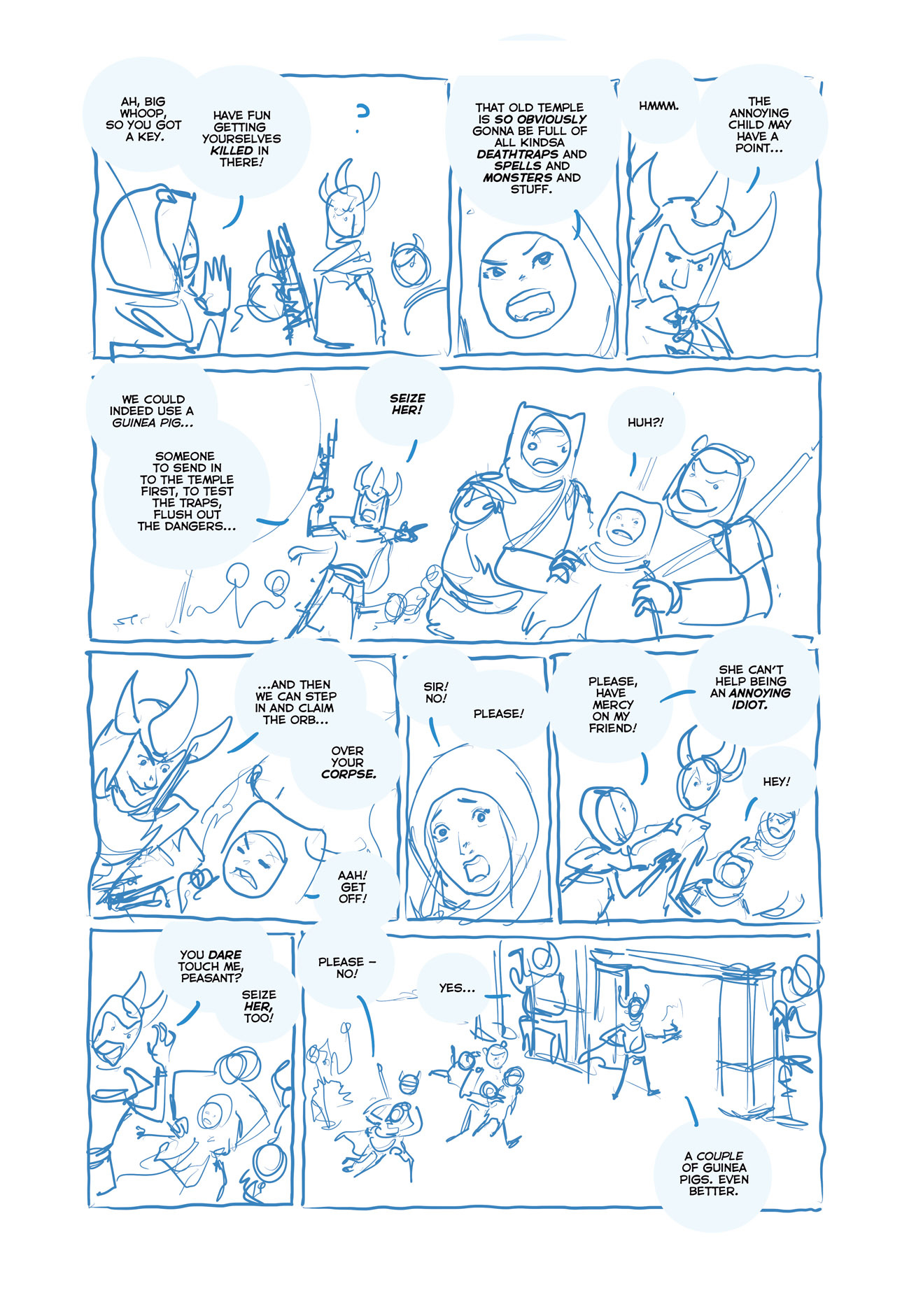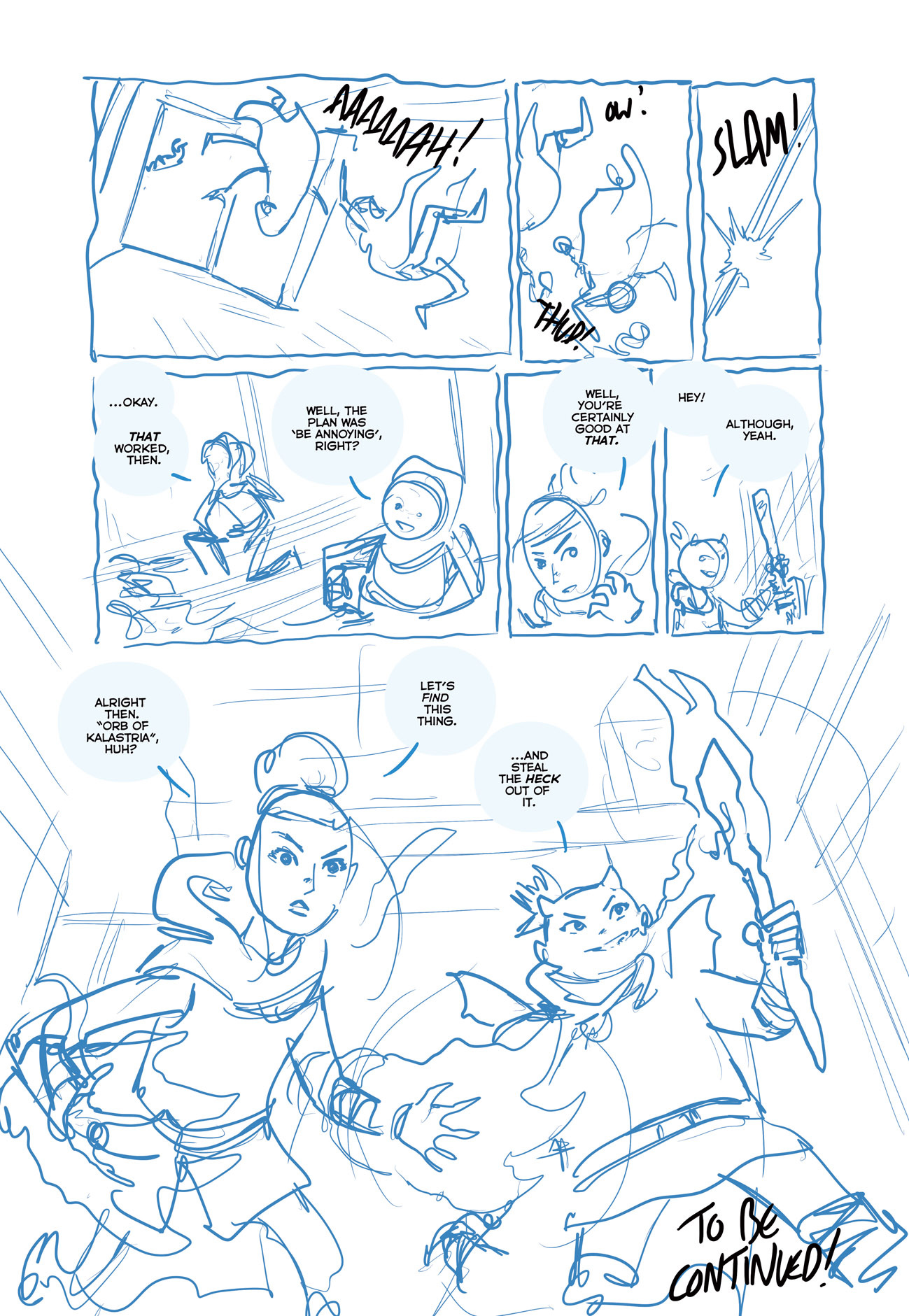I wanted to (belatedly) finish up my little How To Write Comics series of posts here, which is of course not in fact about How To Write Comics but about How I Write Comics, which is the only thing I feel qualified to talk about. I’ve been using episode one of The Twisting Temple - the first story of my series Daughters of the Demon that appears occasionally in the Phoenix - as an example of my process, and I thought I ought to round things off. Part One dealt with The Pitch; writing an outline or overview for a new series, and then Part Two covered writing the outline of the first episode. Go back and read those if you want to catch up!
At this point, that outline being approved, one might ordinarily, you know, start actually writing the thing. Which actually brings up a question I wanted to answer.
asked, back on Part One:Do you think your process would change if you weren’t also drawing the story yourself?
And on those early stages, pitch and outline, I don’t think it would really. It’s a while since I’ve written a story that I wasn’t drawing myself, and generally I’d definitely want to chat to the artist to get their ideas and a sense of what they might want to draw and what story they wanted to tell. But just in terms of what I’d then be producing in terms of format, I think it’d be much the same, up to that point. But here is where it diverges wildly, because in that situation the next step would be for me to write a script. Whereas when I’m drawing it myself, I tend to just jump in here and start drawing. Which in fact, due to the magic of technology, I think we can actually see happen. So, just to refresh your memories, here’s the outline for this page:
We open with a dramatic big shot of the enormous LORD TRIARCHUS, a terrifying DRAGON-SCORPION HYBRID MONSTER possessed of unimaginably strong magic. Narration sings his praises, telling of his awesome power, of how he can take on human form, and how with his seven half-dragon sons as his barons he rules over the entire world in unquestioned majesty and dominion…
A voice cuts in: “that guy? That guy’s a creep.”
And then, here’s the next stage:
That’s a time-lapse video, exported from ProCreate, the (excellent) iPad drawing app I use to rough out the page. So yeah, I jump straight in from the outline to roughs; it just seems like writing a script for myself would be a wasted step, really. I already know the key beats; what needs to happen, where each page begins and ends, and often a few key lines of dialogue and roughly where they need to fall. From there it’s just a question of translating that action and dialogue into a page of comics while filling in the blanks between, and I’ve always found the easiest and most natural way to do that is just to start drawing it.
If you look at the above example, you can see that I figure out the basic shape of the page pretty early on, drawing in blue, and block in (in red) some placeholder boxes for where the dialogue and narration will go, then going over it a few times and adding more detail to both the drawings and the text in subsequent passes.
In a way the page above is a bad example, because I just got really into drawing the cool scorpion demon dragon thing, and was giving it way more attention than I usually would at this rough stage. Let’s do one more, looking at the next page for a slightly more representative panels / action / dialogue split.
We break out of the narration. A small band of ARMOURED SOLDIERS and OGRE-LIKE HENCHMEN are standing before the bedraggled inhabitants of a poor village, as their leader - a tiny man with a giant helmet - reads self-importantly from a scroll. “Who said that?” he demands to know. Who dares speak thus of the all-powerful Lord Triarchus?
The terrified villagers shuffle away uneasily from one loud-mouthed kid, dressed in a Humble Peasant Type Cloak, who definitely said it. “What?” She protests. “He IS a creep.” She goes on to opine that he not only is a terrible ruler but also LOOKS STUPID, that being both a dragon and a scorpion is definitely a case of trying too hard, and that magical dictatorship is really no basis for a system of government anyway.
The head soldier orders her to be SILENT, and carries on reading from the scroll - revealing how in all his power, there is one thing the Dragon Lord has long desired - an ancient rumoured source of great magical power, which has finally been found - in the sealed temple HERE, in this obscure and pitiful village - and for which they have the long-thought-lost KEY!
A couple of observations:
a huge part of this which sounds really boring but is incredibly crucial is: doing it this way, working out the artwork and dialogue at the same time, means that you will leave enough room for the lettering. This sounds obvious, but I think it can be a really hard thing to judge correctly when writing a comic script; balancing the visual action with the words. I think there’s probably all sorts of other benefits to doing it this way too, in terms of letting you control the flow of the page and organically shape the reader’s experience and stuff like that, but I really cannot over-state the importance of just Making Sure You Leave Enough Room For The Lettering.
it is funny to me, looking at this video, that when I am doing the ‘pencilling’ bit, adding the layers of detail to each page, I always - entirely unconsciously - draw the page backwards. Like, starting at the bottom right and working my way back up to the top left. This a habit learned over many years, on account of my being left-handed, to prevent my smudging the page as I go. I just find it entertaining that I still apparently do this even when I am drawing on an iPad and there is literally no way of smudging it. Brains: are funny!
Anyway, here’s the finished roughs for that first episode, to finish us up!
I tend to letter the roughs semi-properly before sending them in to my editors: again, just to make sure it all fits OK when lettered at the right size, but also because it would seem unreasonably optimistic to expect anyone else to be able to actually read my scrawl on these things.
And that’s about it for the writing stage. I’m often tweaking and reworking the dialogue all the way through through the process, right up to sending off the final coloured versions. (This is again, a great advantage of drawing and lettering your own work, and I have no idea how writers who don’t letter their own work handle this without driving their letterers absolutely mad.) And then of course there’s dealing with editorial feedback. But in this case and this specific example, I don’t think there were any particularly significant notes past this point (what can I say, clearly I had NAILED IT), so there you go: that is how I write comics! To read the final version, please check out, uh, whatever back issue of the Phoenix this appeared in over a year ago? Okay thanks bye.








This was awesome! Thank you so much for sharing!!